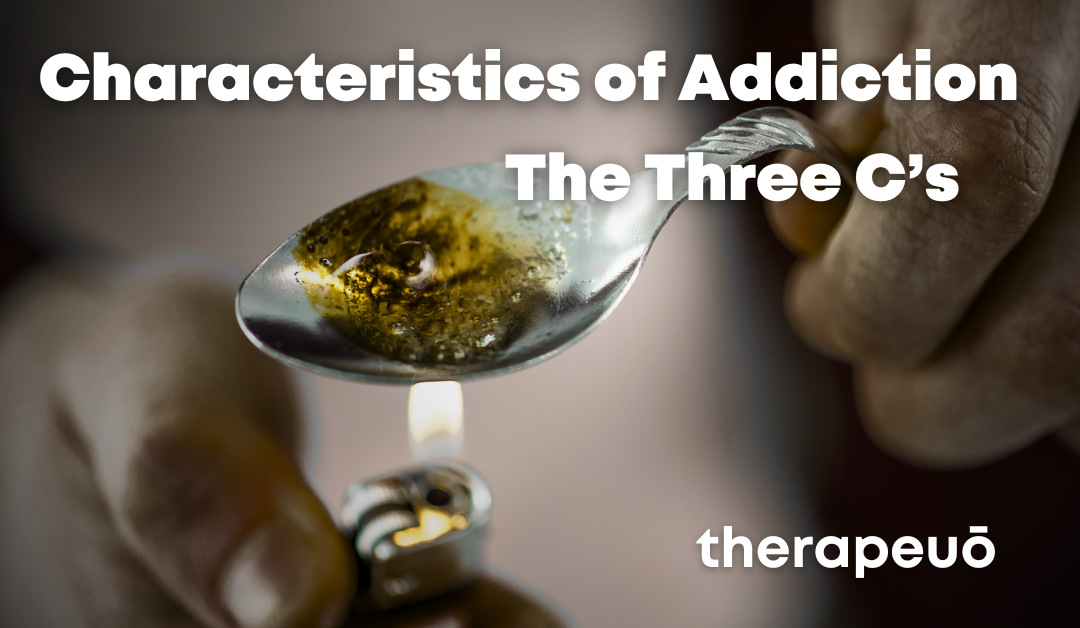
The Three C’s of Addiction
Characteristics of Addiction: The Three C’s
Regardless of how the addiction may present itself, it almost certainly looks the same – whether the addiction is a chemical dependence such as drugs or alcohol, or a behavior such as masturbation, shopping, cybersex or gaming – it almost always has the following characteristics, also known as the three C’s.
- Compulsive usage.
- Loss of Control.
- and Continued use despite negative consequences.
Below we will take a look at these three characteristics of addiction.
Compulsive Usage
The word compulsive is an adjective often used to describe people who engage in risky and harmful behavior beyond their control. As an example, a compulsive liar would be someone who has little or absolutely no control over the lies they tell. A compulsive gambler would be someone who cannot help but sit down when they walk past a poker table. Often the person with compulsive tendencies would have very little control over their actions, and so it is with addiction.
I remember when I was an addict. It was a strange feeling, wanting to quit, and perhaps setting out with the best of intentions to walk to the corner shop, only to find oneself redirected by an unknown force. Before you knew it you would be in the bottle store or at the dealer.
According to A.W. Blume (2005) this compulsive use often has 3 elements. Reinforcement, craving and habit.
When the substance user first picks up his drug and experiences relief from stress or physical pain – or the action is rewarded by the pleasure centers of the brain – reinforcement occurs. This reinforcement occurs every time the user engages in this behavior. Over time tolerance may develop and larger or more concentrated doses will be required to produce the same effects.
Over time the chemical balance of the brain is altered and the user will experience craving, a strong and often intense signal sent by the brain to the body to signal that the substance or behavior is needed. The brain is essentially telling the body that it needs the substance for survival.
Psychological or physical withdrawal symptoms can occur if the craving is not fed. Withdrawals are often very unpleasant symptoms that are caused when the drug(s) or behavior is withheld. This could be psychological, eg. anxiety or depression, or physical such as muscle fatigue, pain or insomnia.
The third element, habit, is often the result of deeply ingrained patterns of memory in the nervous system. Addiction often goes hand in hand with a myriad of automatic behavior over which the user has very little control.
Loss of Control
We, as addicts, often cannot determine how much of a substance we will use. In the rooms of Alcoholics Anonymous there is a saying that comes down to the fact that one drink is never enough – once we start engaging in the behavior we often find we cannot stop.
There is almost no doubt that this could be the result of impaired brain function and memory.
Substance use can often impair judgment and affect decision making.
Continued use despite negative consequences
Often an addict will find that the pleasure or relief derived from their usage of the drug outweighs the negative consequences of their use.
We are often blissfully unaware of the negative consequences of our behavior even though it negatively affects our careers, relationships and health.
It is usually keenly felt by those around us. Addictive behavior is almost always self-destructive and leads to the deterioration of ones quality of life.
Once again, the twelve step fellowships have a cliche that applies – continued drug or alcohol abuse will eventually lead to jail, institutions or death.
This last C – continued use despite negative consequences – is possibly one of the most distinct characteristics of addiction along with craving, tolerance and withdrawal.
Tolerance and Withdrawal
Tolerance and withdrawal are two sides of the same coin – both urging the user to use more. Tolerance builds over time and forces the addict to use more of the substance or engage in more of the same behavior to experience the same relief or reward.
Withdrawal on the other side is what keeps the user from getting clean. As soon as the effects of the drug subside, and because the body has adapted to the drug, negative symptoms present themselves to signal the absolute need for the substance. The withdrawal symptoms are often severely unpleasant and can be life threatening if left untreated.
It is important to detox under medical supervision, and withdrawal from certain substances might require medication under certain circumstances.
Luckily there is hope, and we never have to go through these things alone.
If you or a loved one are struggling with addiction – if you have been experimenting and notice any of the above traits in your life or in the behavior of a loved one, or if you relate with what you just read, please consider reaching out by sending an email to andre@adlabuschagne.co.za and we will assist you with finding an option that works for you.

